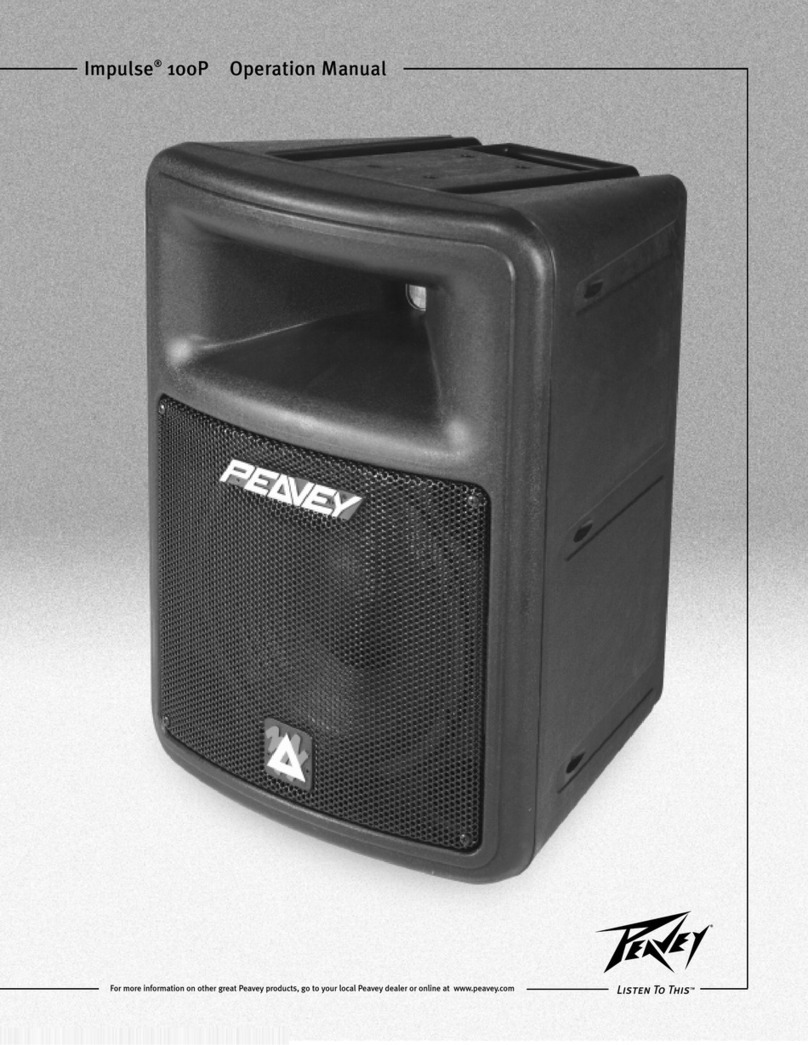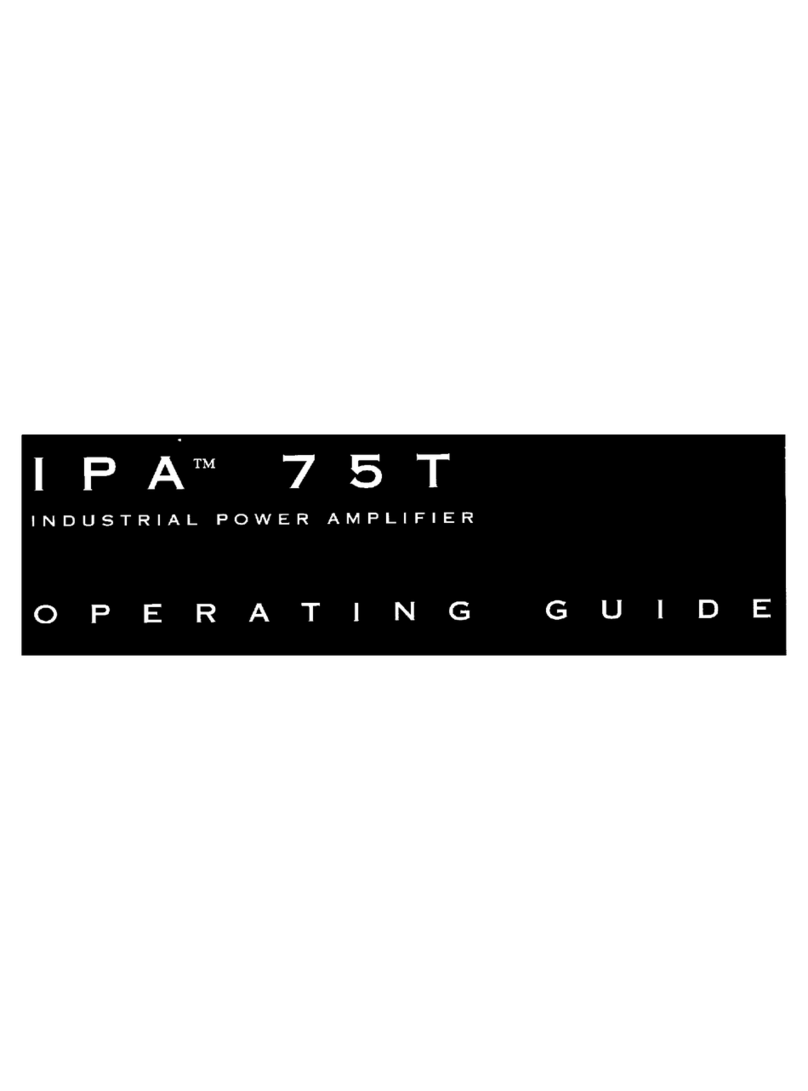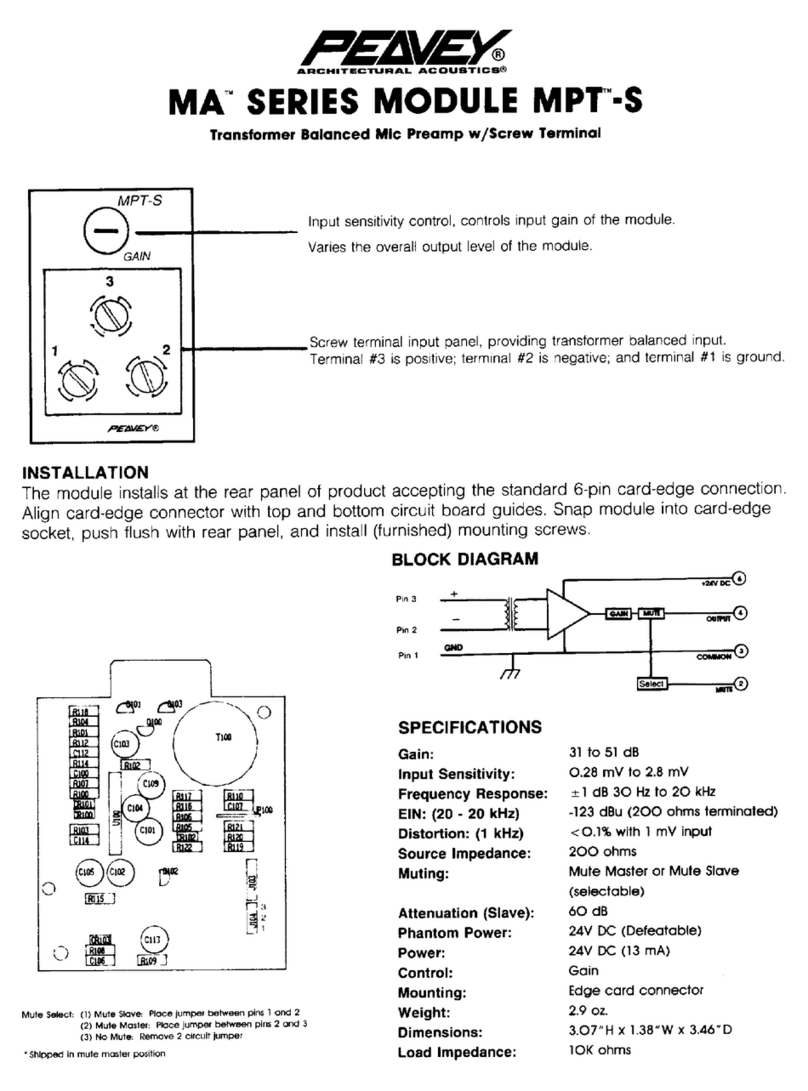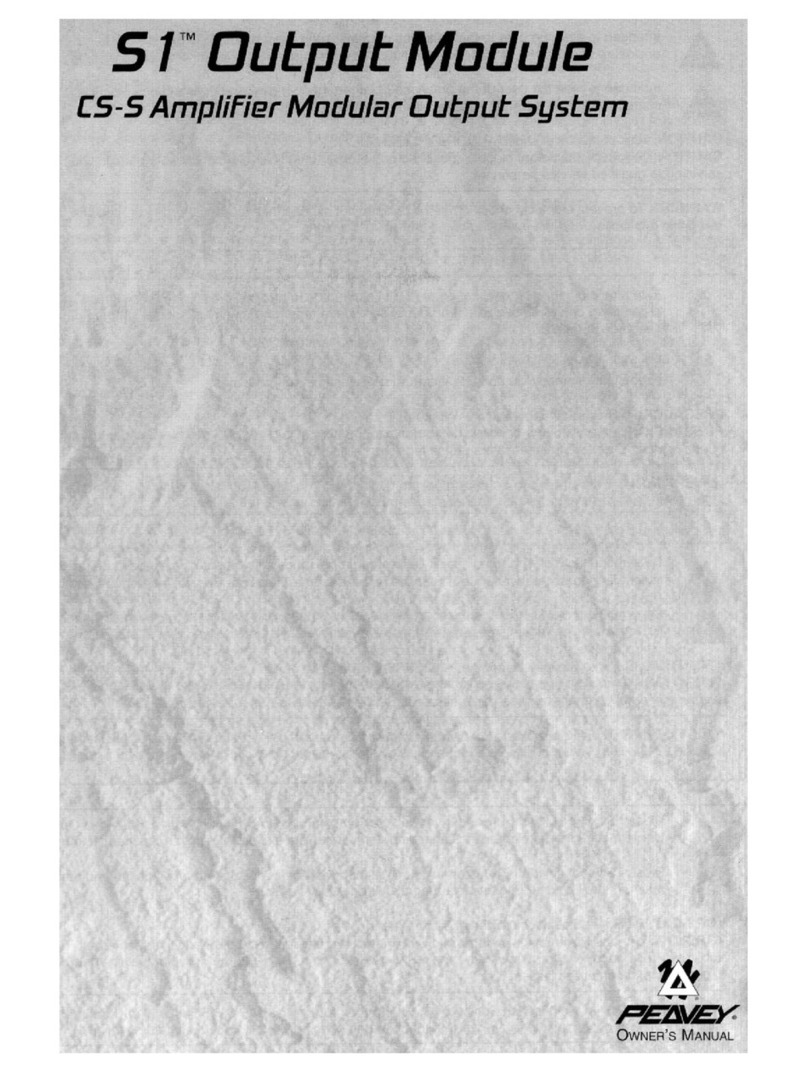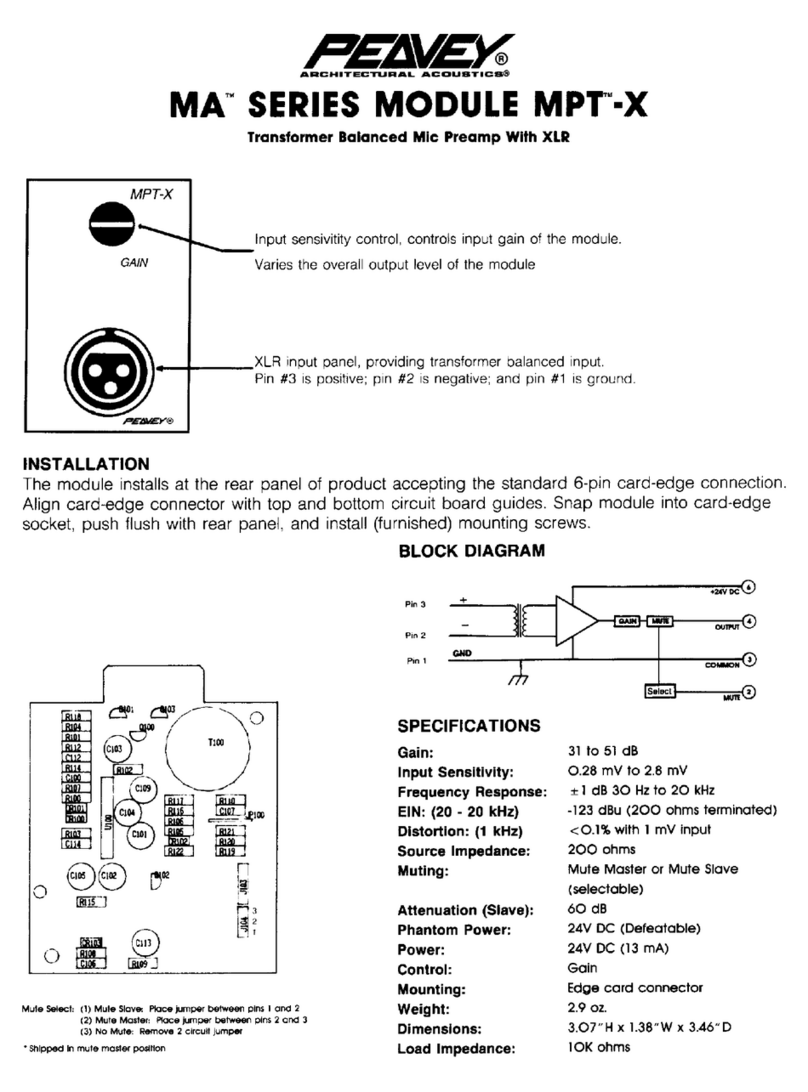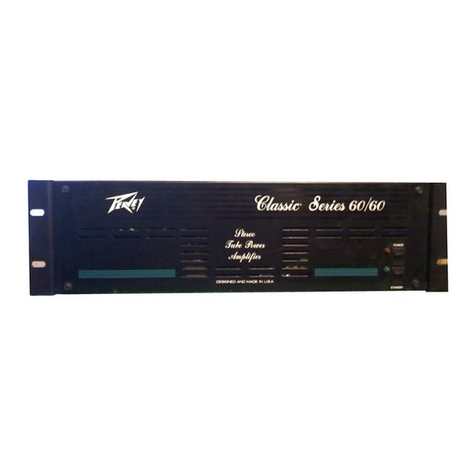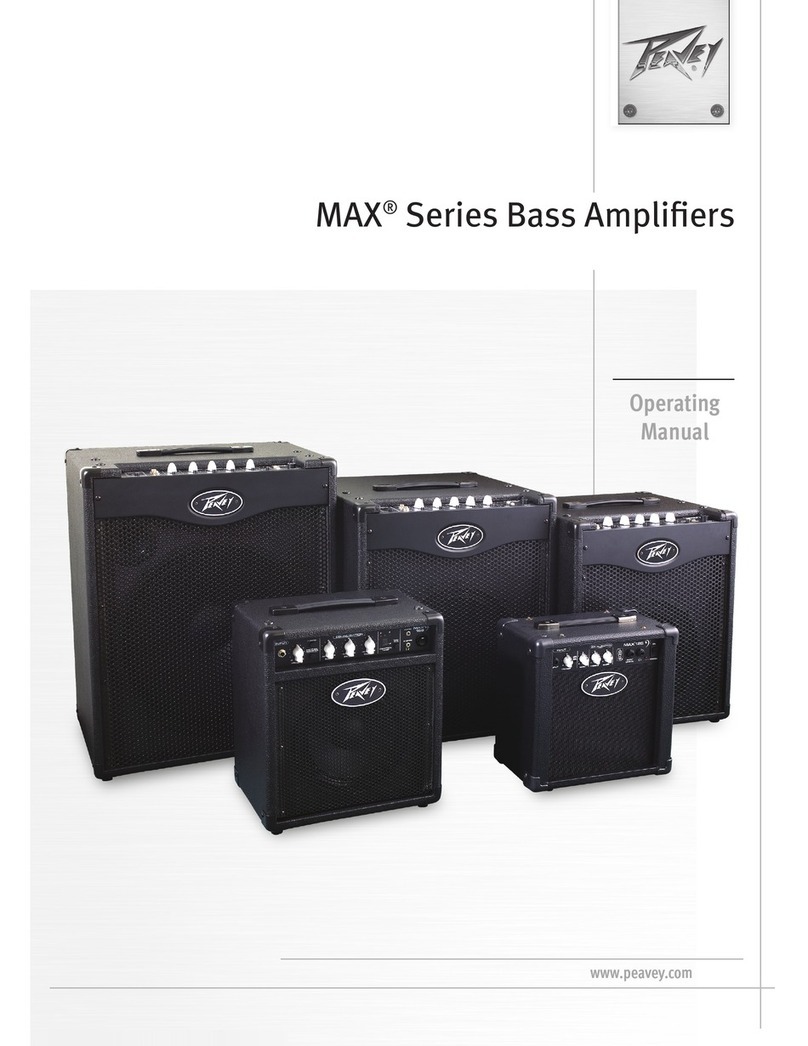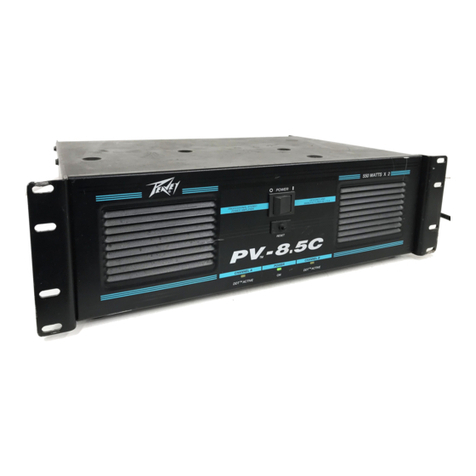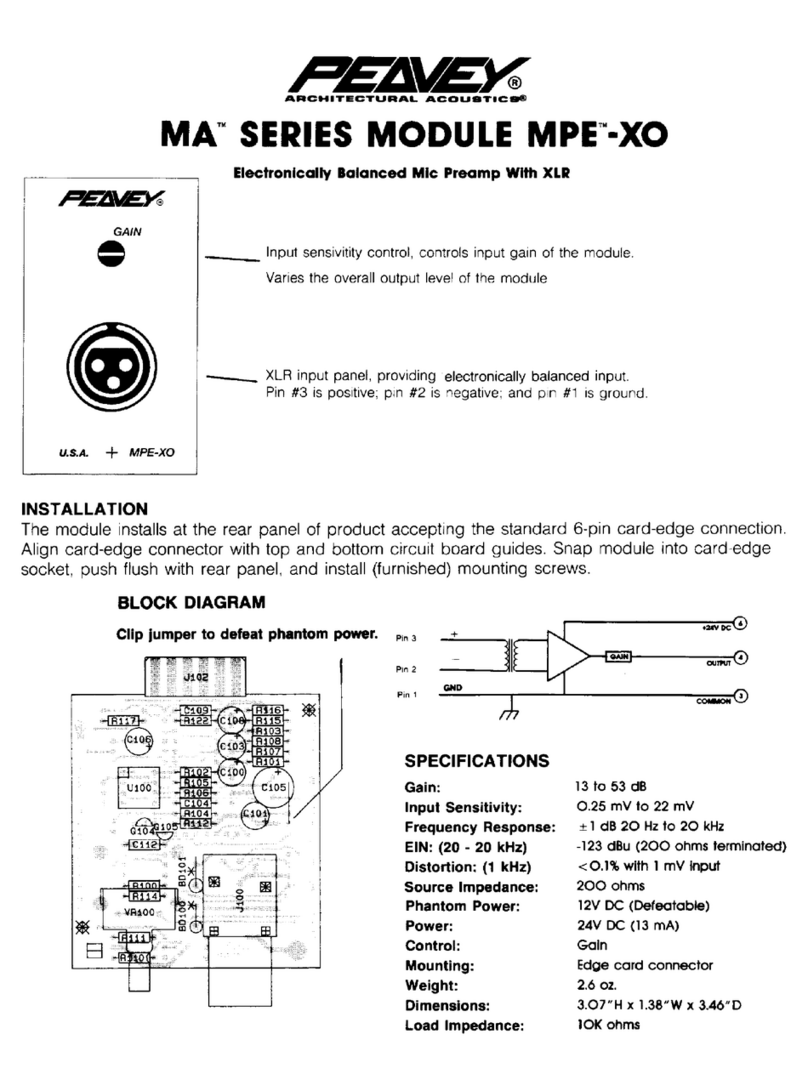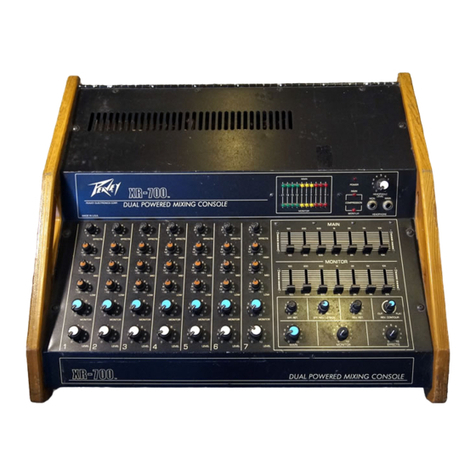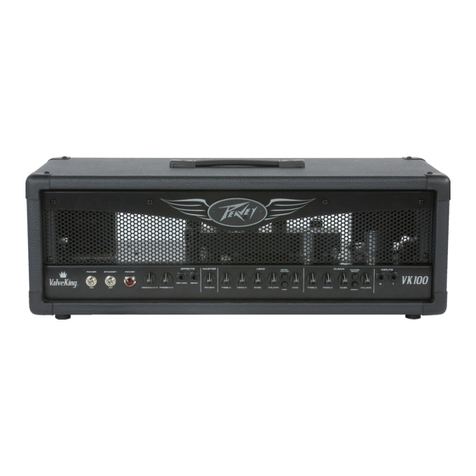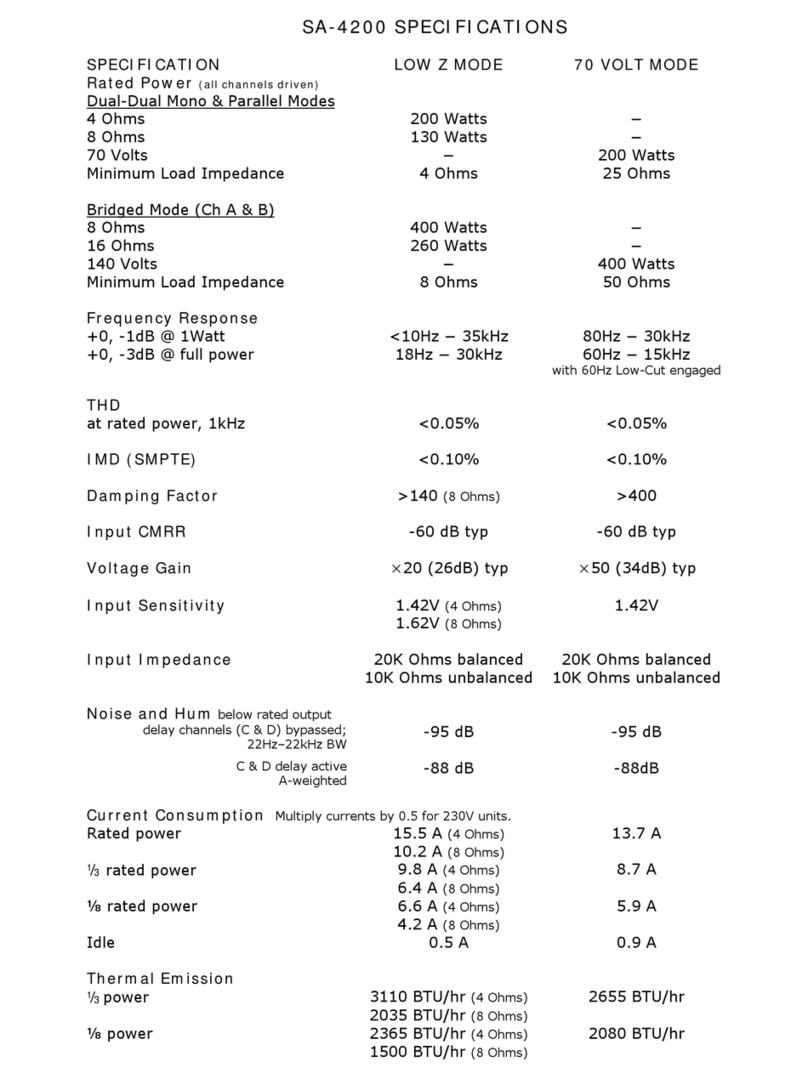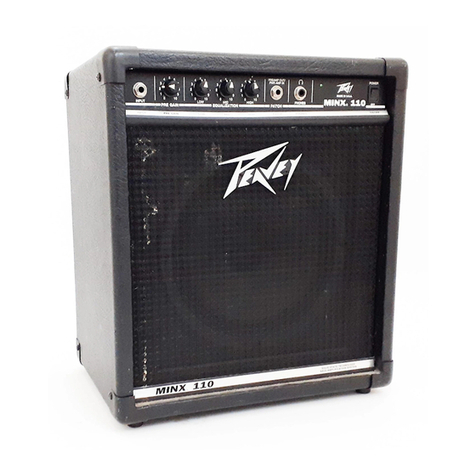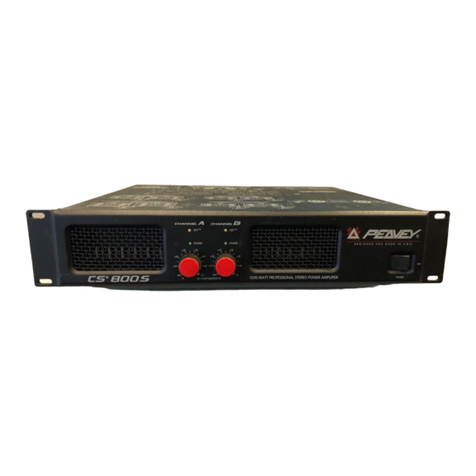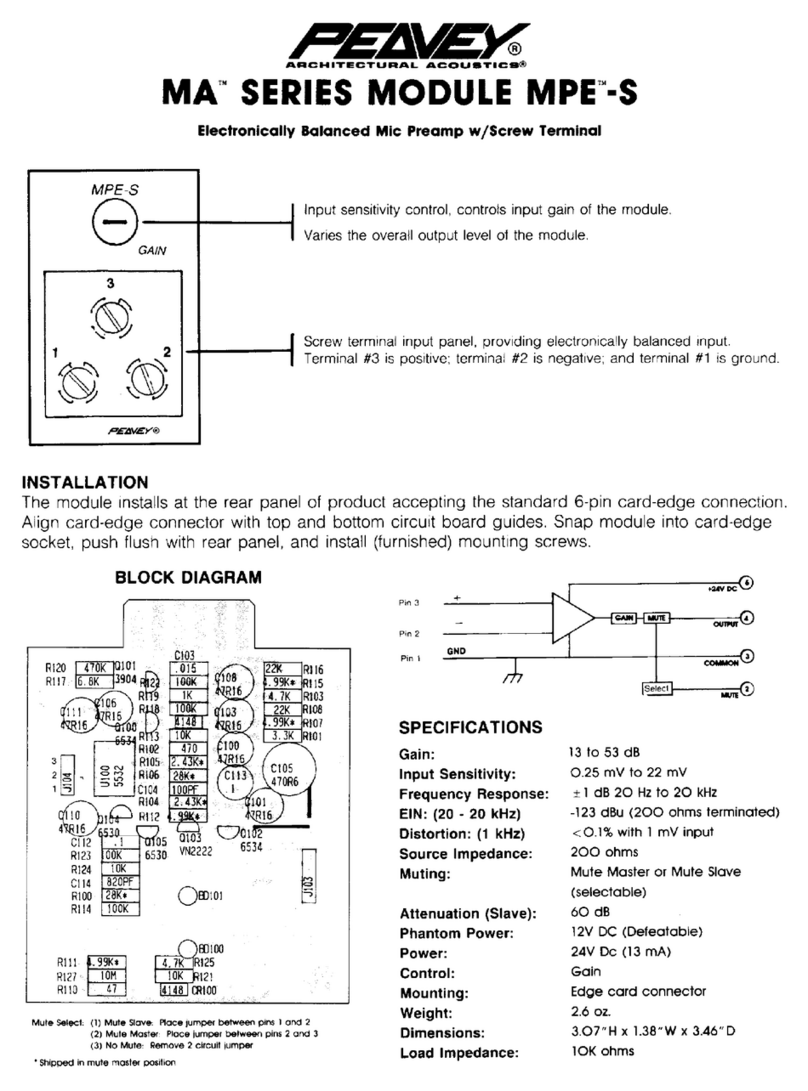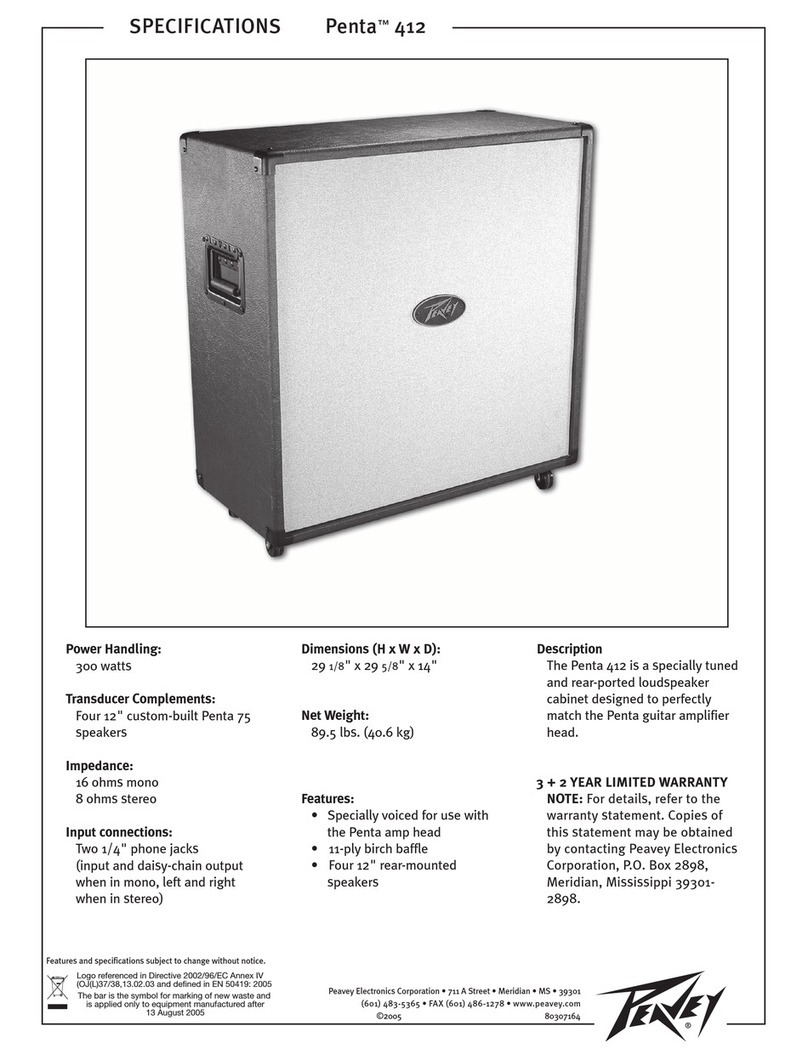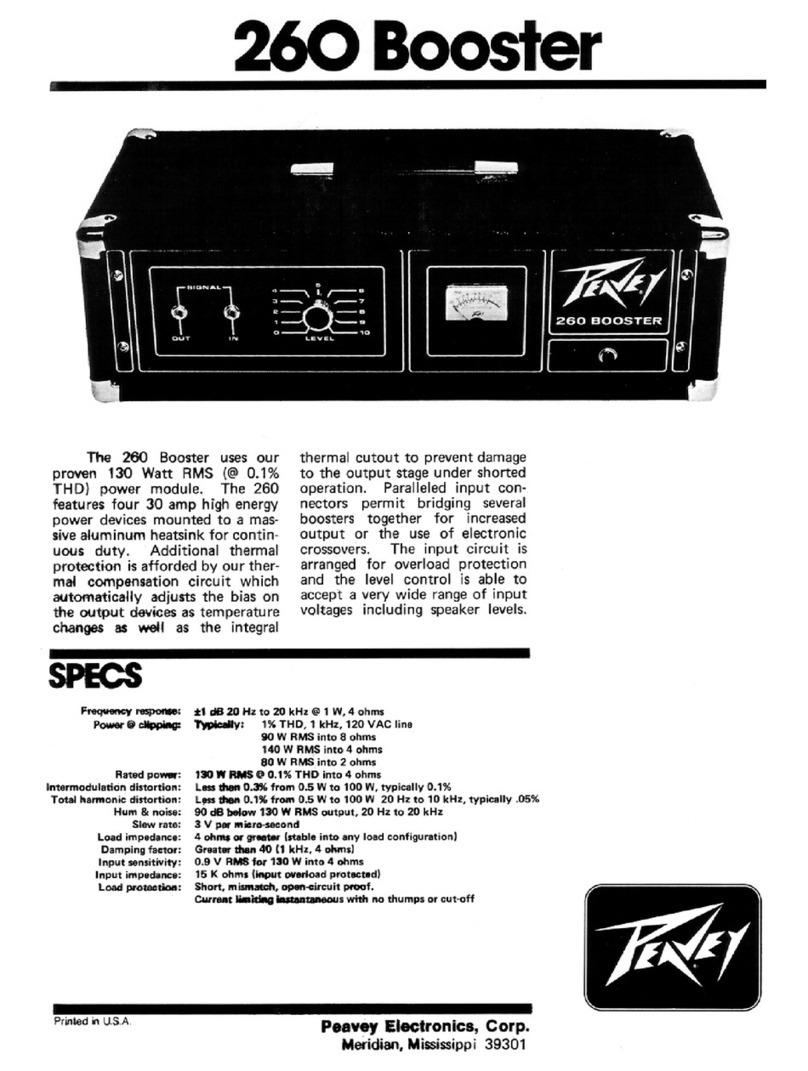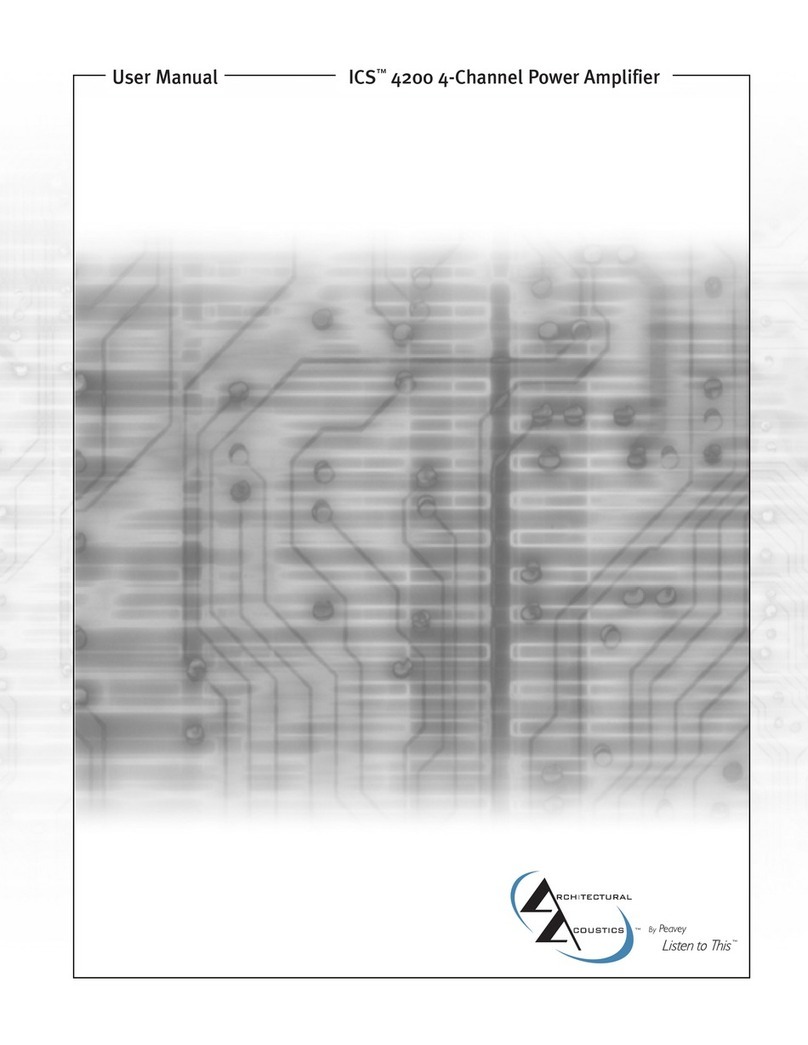10
SShhoorrtt CCiirrccuuiitt
If an output is shorted, the LFC and thermal circuits will automatically protect the amplifier. The LFC
circuit senses the short circuit as an extremely stressful load condition and attenuates the signal,
protecting the channel’s output transistors from over current stress. If the short circuit remains, the
channel will eventually thermally protect itself by disconnecting the load.
DDCC oollttaaggee PPrrootteeccttiioonn
If an amplifier channel detects DC voltage or subsonic frequencies at its output terminals, its output
relay will immediately open to prevent loudspea er damage. The channel’s DC LED will light.
TTuurrnn--OOnn//TTuurrnn--OOffff PPrrootteeccttiioonn
At power-up, the amplifier stays in the protect mode, with outputs disconnected, for approximately
four seconds while the power supplies charge and stabilize. While the output relays are open, the DDT
LEDs light. When power is removed, the spea er loads immediately disconnect so that no thumps or
pops are heard.
RRaammppUUpp™™SSiiggnnaall CCoonnttrrooll
Whenever amplifier powers up or comes out of a protect mode, the RampUp™circuit activates. While
the spea ers are disconnected, the RampUp™circuit fully attenuates the signal. After the output relay
closes, the signal slowly and gradually raises up to its set level. The RampUp™Signal Control circuit
has some important advantages over the conventional instant-on circuits:
If a signal is present during power-up (or when coming out of protect), the spea ers are
spared a sudden, potentially damaging burst of audio power.
Because the gain is reduced until after the output relay closes, no arcing occurs at the
contacts, thereby extending their useful life.
SSppeeaakkeerr PPrrootteeccttiioonn
All loudspea ers have electrical, thermal and physical limits that must be observed to prevent
damage or failure. Too much power, low frequencies applied to high frequency drivers, severely
clipped waveforms, and DC voltage can all be fatal to cone and compression drivers. The Peavey
CS2000H amplifier automatically protects spea ers from DC voltages and subsonic signals. For more
information, see the section on Protection Features. Mid- and high-frequency spea ers, especially
compression drivers, are highly susceptible to damage from overpowering, clipped waveforms, or
frequencies below their rated pass band. Be extremely careful that the low and mid bands of an
electronic crossover are connected to the correct amplifiers and drivers and not accidentally
connected to those for a lower frequency band. The amplifier’s clipping point is its maximum pea
output power, and the high power Peavey CS 2000H amplifier can deliver more power than many
spea ers can safely handle. Be sure the pea power capability of the amplifier is not excessive for
your spea er system.
Fuses may also be used to limit power to spea er drivers, although as current-limiting rather than
voltage-limiting devices, they are an imperfect solution, and as the wea est lin s, they only limit once
before needing replacement. Some poor quality fuses have a significant series resistance that could
degrade the amplifier’s damping of the spea er’s motion and may even deteriorate the system’s
sound quality. If you elect to use fuses, chec with the spea er manufacturer to determine the proper
current rating and time lag required.
Do not drive any low-frequency spea er enclosure with frequencies lower than its own tuned
frequency; the reduced acoustical damping could cause a ported spea er to bottom out even at
moderate power. Consult the spea er system specifications to determine its frequency limits.
AAmmpplliiffiieerr MMaaiinntteennaannccee aanndd UUsseerr RReessppoonnssiibbiilliittyy
A CS 2000H amplifier requires no other routine maintenance and should never need any internal
adjustment during its lifetime. Your CS 2000H amplifier is very powerful and can be potentially
dangerous to loudspea ers and humans ali e. It is your responsibility to read the Important
Precautions section and to ma e sure that the amplifier is installed, wired and operated properly as
instructed in this manual. Many loudspea ers can be easily damaged or destroyed by overpowering,
especially with the high power available from a bridged amplifier. Read the Spea er Protection section
and always be aware of the spea er’s continuous and pea power capabilities.
